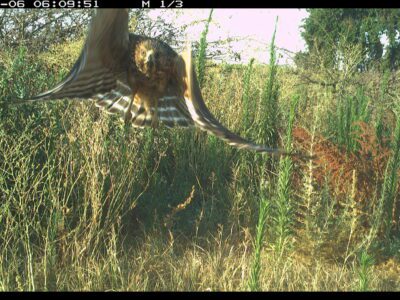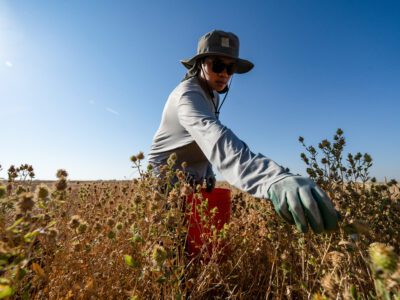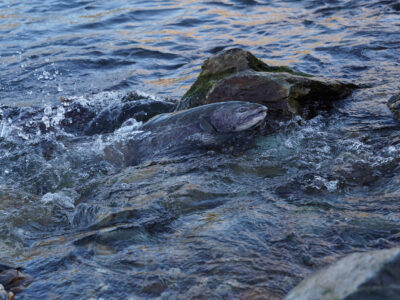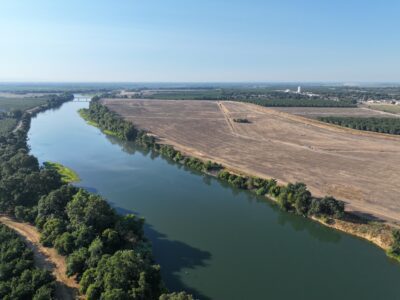Located at the confluence of the San Joaquin and Tuolumne rivers just west of Modesto, Dos Rios Ranch Preserve provides a blueprint for multi-benefit riverway restoration delivering water solutions, wildlife habitat, flood safety, and more. Yet, there’s something else that sets this historic restoration apart. Dos Rios Ranch provides a place for Indigenous peoples to gather native plants, safely and freely.
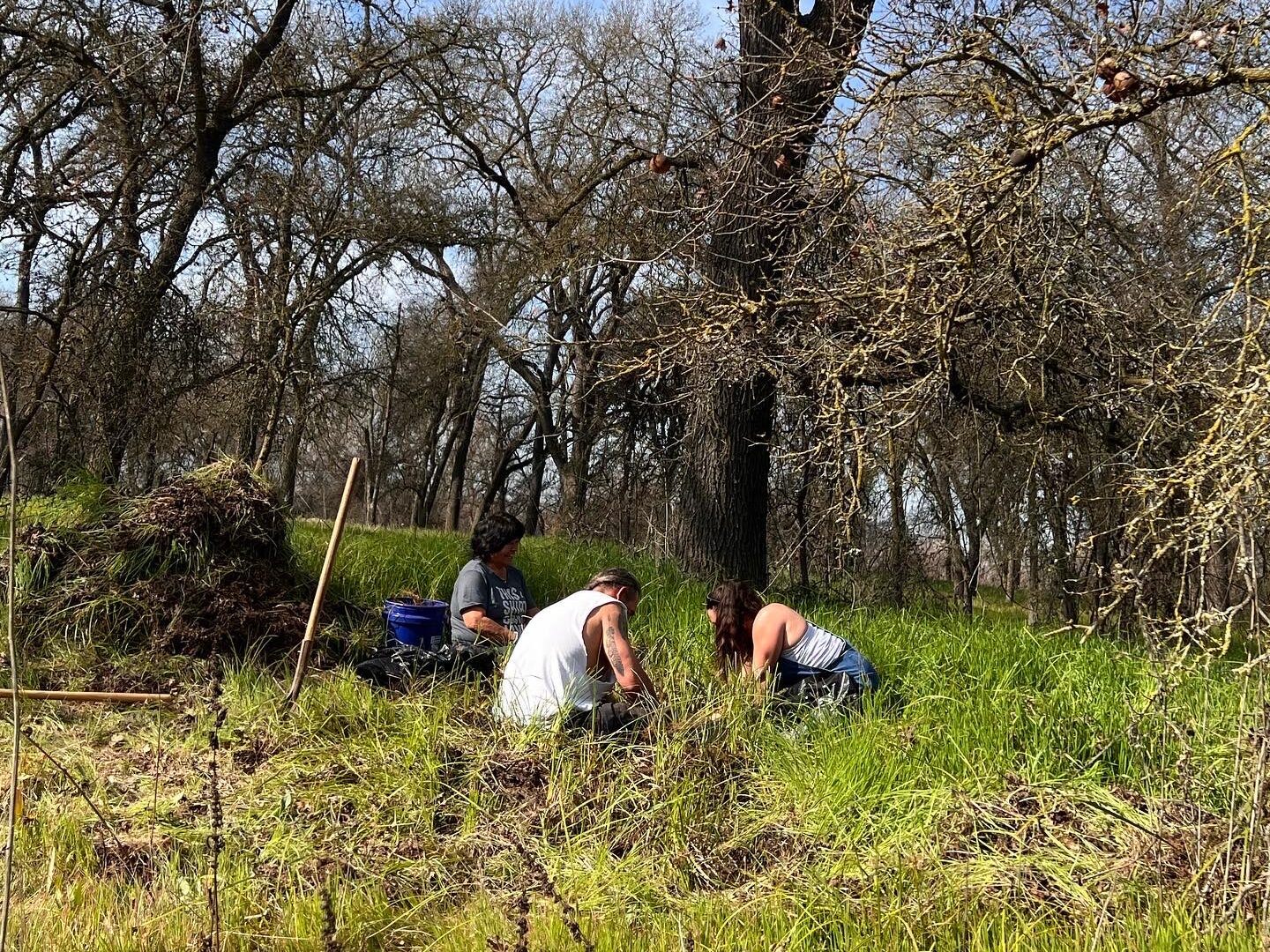
River Partners established the Native Use Garden at the ranch in November 2021 with sedge, deergrass, dogbane, and other native plants used for basket weaving. The three-acre garden within the 2,100-acre preserve is protected with a federal use authorization from the Natural Resource Conservation Service for permanent Native use and access, shaping a new model for expanding Indigenous access to restored landscapes essential for cultural survival and renewal.
Since 2012, River Partners and a coalition of public and private allies worked together to restore the historic floodplain into a historic riparian sanctuary. In 2022, the Preserve was selected to become California’s newest State Park in over a decade. The new California State Park will provide much needed outdoor access in a park-starved region of the San Joaquin Valley, as well as critical heat refugia for residents and endangered wildlife alike.
In May 2023, Northern Sierra Mewuk basket weaver Kimberly Stevenot addressed supporters of Dos Rios Ranch to share the significance of the garden. The following is an excerpt of her speech:
“Greetings!! My name is Tewete aka Kimberly Stevenot. My family are direct descendants of the village of Hechenu Palaka, known today as Railroad Flat, in Calaveras County. I am a fifth generation documented Northern Sierra Mewuk basket weaver, I am a gatherer, and a keeper of traditional Mewuk cultural arts.
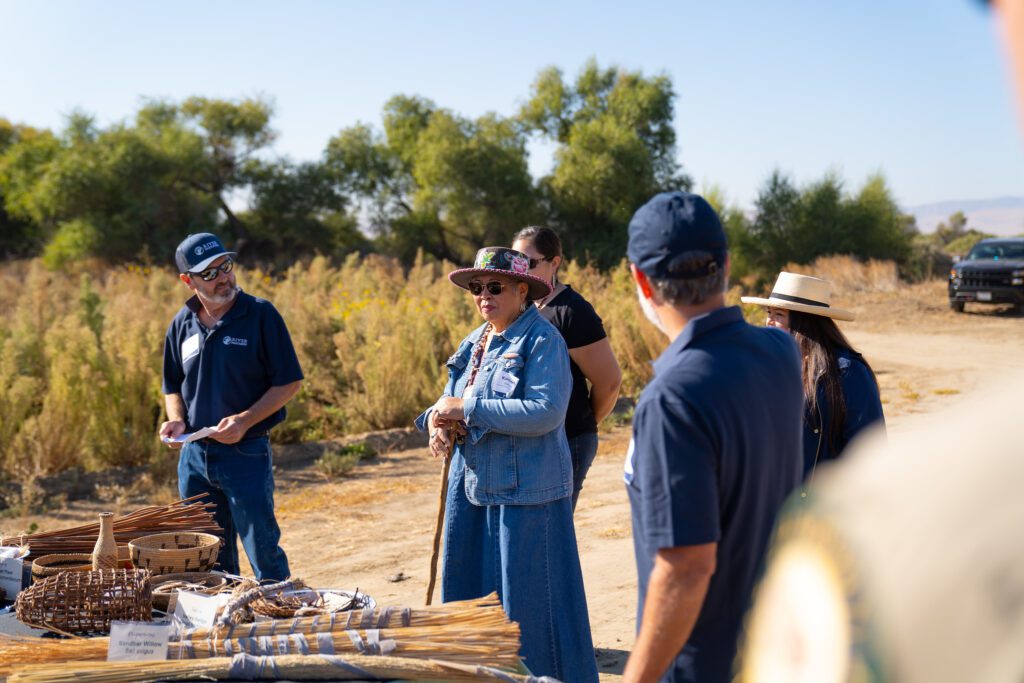
I’m a founding Member of the California Indian Basketweavers Association, formed in 1991, and became a non-profit in 1993. I am a traditional Northern Sierra Mewuk cultural teacher and demonstrator, which has taken me throughout California, the United States, Mexico and abroad. I’m honored to be here today to share with you the importance of Dos Rios, and the river systems that River Partners restores, and what it means to me and fellow weavers and gatherers.
For centuries this area was a meeting ground for tribal units of this part of California. To the south we have the Northern Yokut, to the north, we have the Valley Miwok, to the west, Coastal Miwok and Coastanoan, and to the east, we have the Sierra Mewuk. These different tribal units had a strong trade system for food, medicinals, weaving materials and items of adornment.
The rivers were the guides for our ancestors to follow to this area of which we stand. Post-contact made the rivers into boundaries and Native People into bounties.
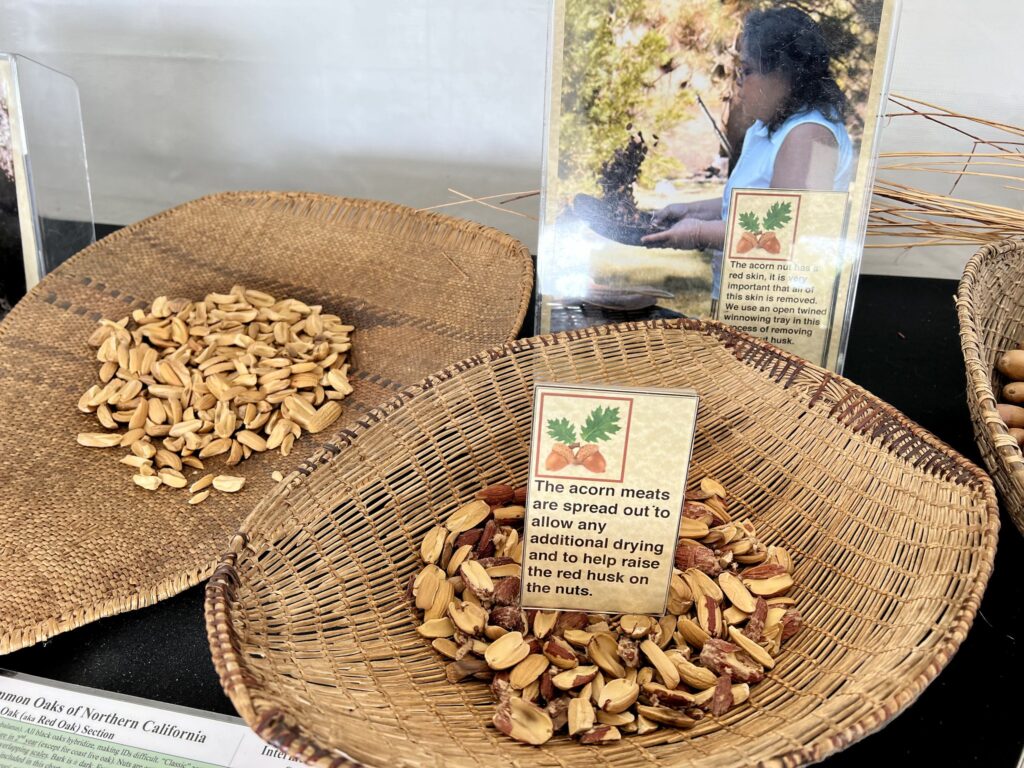
I would like to acknowledge this land of gatherings and meetings to the tribal units of the Northern Yokut, Valley Miwok, Coastal Miwok, and the Sierra Mewuk. When I was first invited to tour Dos Rios, I felt a strong connection to the area.
That first interaction with the River Partners team, gave me the belief that we, as the Indigenous People of this land, actually had a chance to have a place where we could gather our native plants, for weaving and medicinal use, freely. Up until 1978, Native People were forbidden to practice our traditional religion, or to even have items used for religious practices. This included indigenous California plants, that we use for religious ceremonies, medicinal use, and to construct regalia used in our ceremonies. I can remember as a child being the lookout for approaching vehicles when we were out gathering plants.
You can imagine my excitement when my son told me that we could plant a Native Plant Gathering garden at Dos Rios. So we gathered who we could at short notice, and came out and planted the Dos Rios, Native Plant Gathering garden.
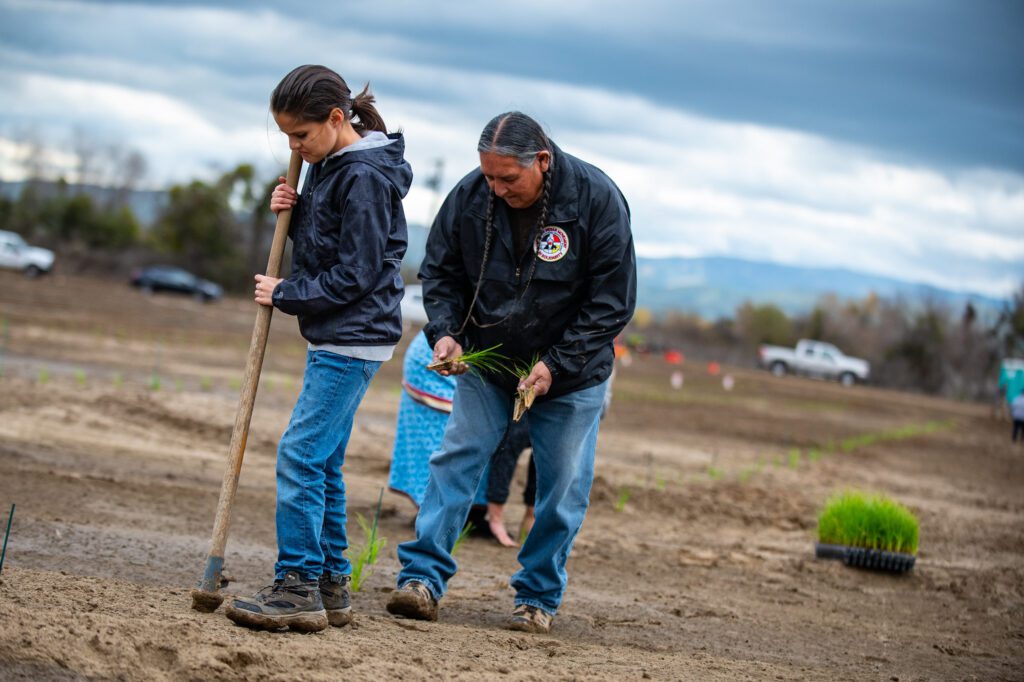
A handful of us got it planted in one day.
I was also informed that they had located a couple of sedge beds here. Our first gathering of California Native basketweavers and gatherers here at Dos Rios happened soon after. Our Auntie, renowned weaver Julia Parker, joined us with her family, and blessed the land.
About 15 weavers and gatherers joined us that day, under the canopy of the valley oaks in the northwest part of Dos Rios, we put a small dent in cleaning up the sedge bed.
Plans were to come back to gather this past late winter and continue cleaning up the beds, but Creator finally gave us water, a lot of water. So gathering will be put off until the sedge beds are accessible.
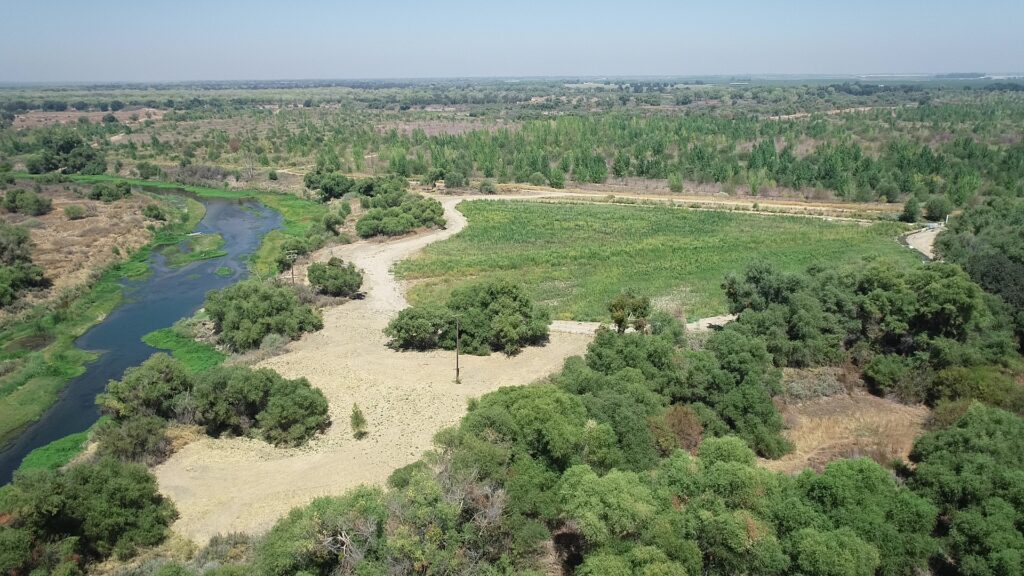
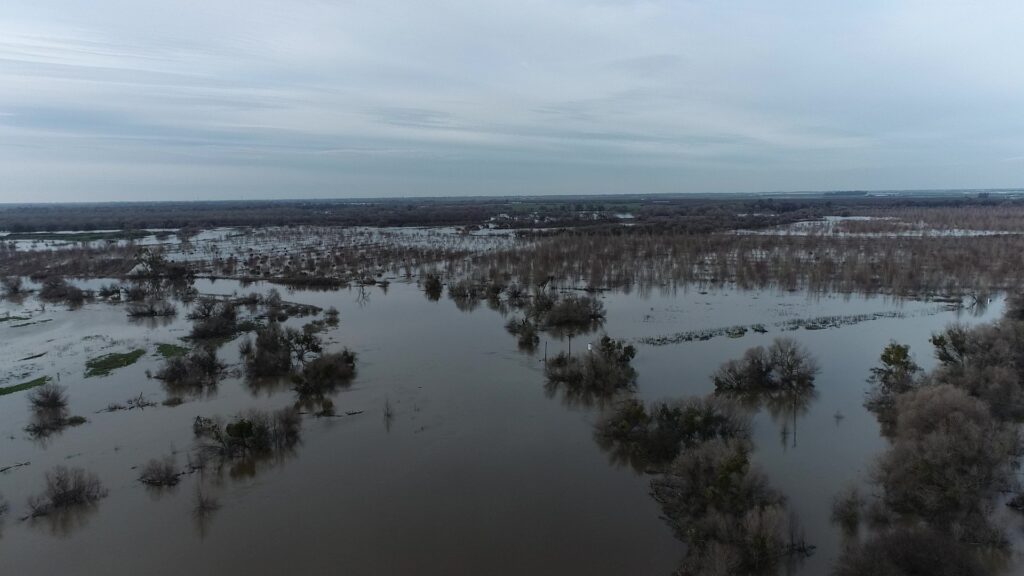
We gather the rhizomes of the sedge, after decades of growth, they are a tangled web of roots. Hopefully when the water recedes, we can again make a visit to work more of the area, and to see what we can salvage in the Gathering garden.
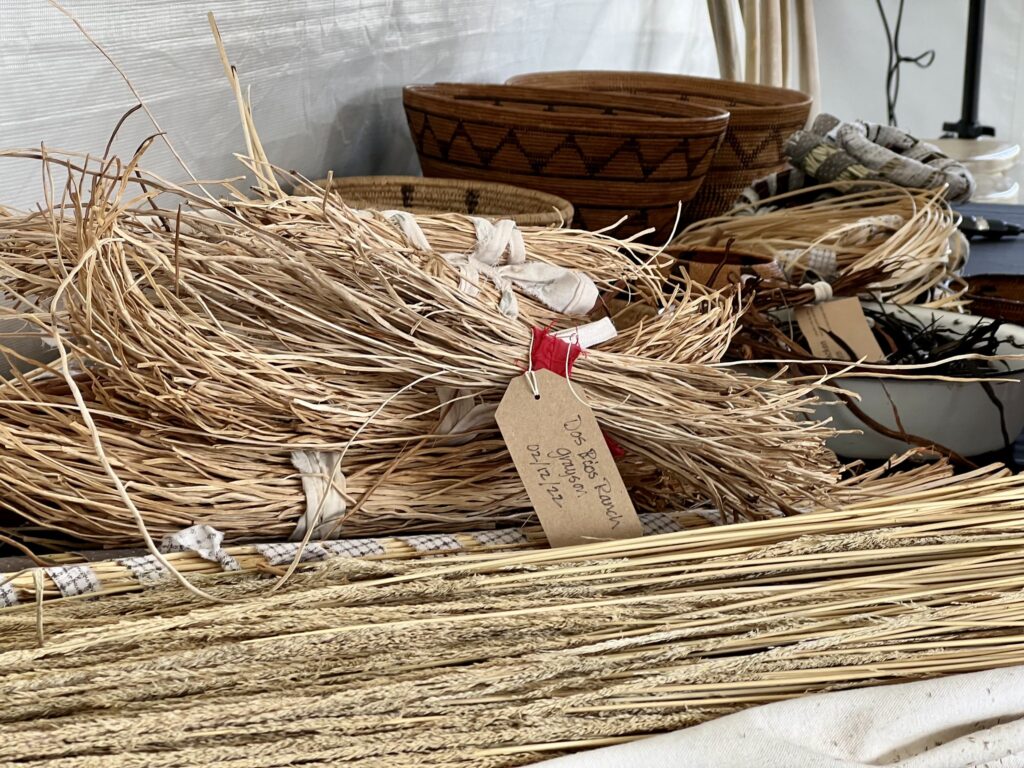
With your generous support, River Partners can make larger restoration of our river systems and an impact in the revitalization of our California Native People culture. As we finally have a place where we can gather safely, free of pesticides, herbicides, and the general population who cannot grasp what we are doing in holding onto our traditional culture practices.”
About Kimberly Stevenot
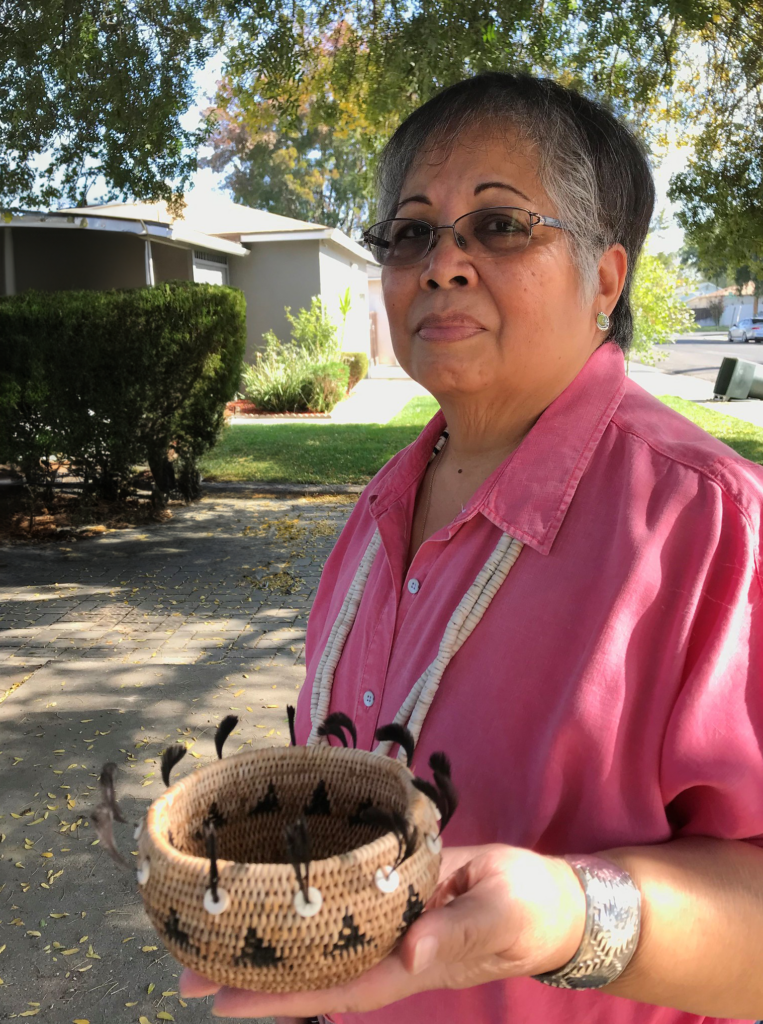
Kimberly is a founding member of California Indian Basketweavers’ Association (CIBA) and works to preserve, promote, and perpetuate basketweaving traditions. She is gifted in Native cuisine, sharing her knowledge of Mewuk culture with her community through demonstrations and lectures. Kimberly learned from her mother, Dorothy Stanley, her grandmother, and aunties the process of cooking nupa (acorn soup) and many other traditional Mewuk foods. Her craft is not limited to the culinary arts but extends into the world of Mewuk basket weaving and jewelry making, both of which are made with traditional Native materials.
Read more: Restoring Rivers, Preserving Traditions

